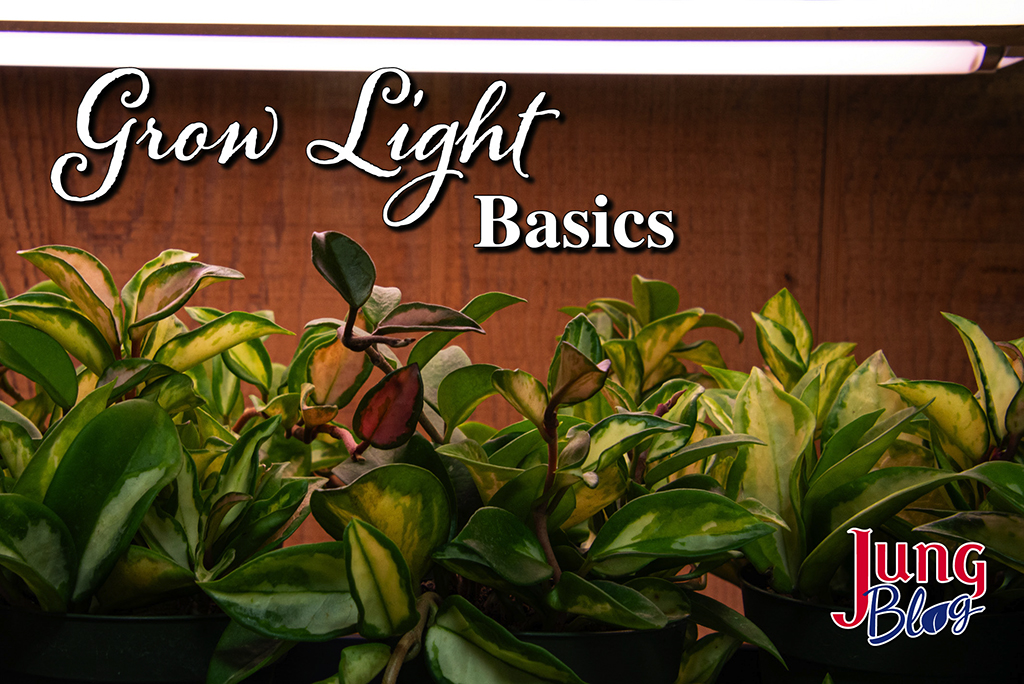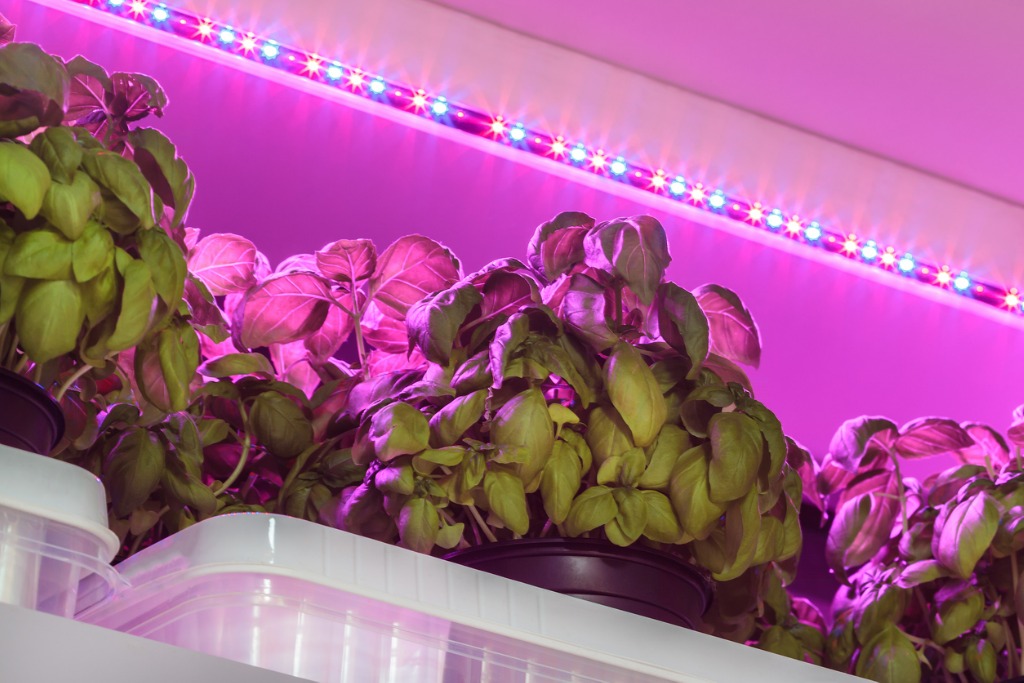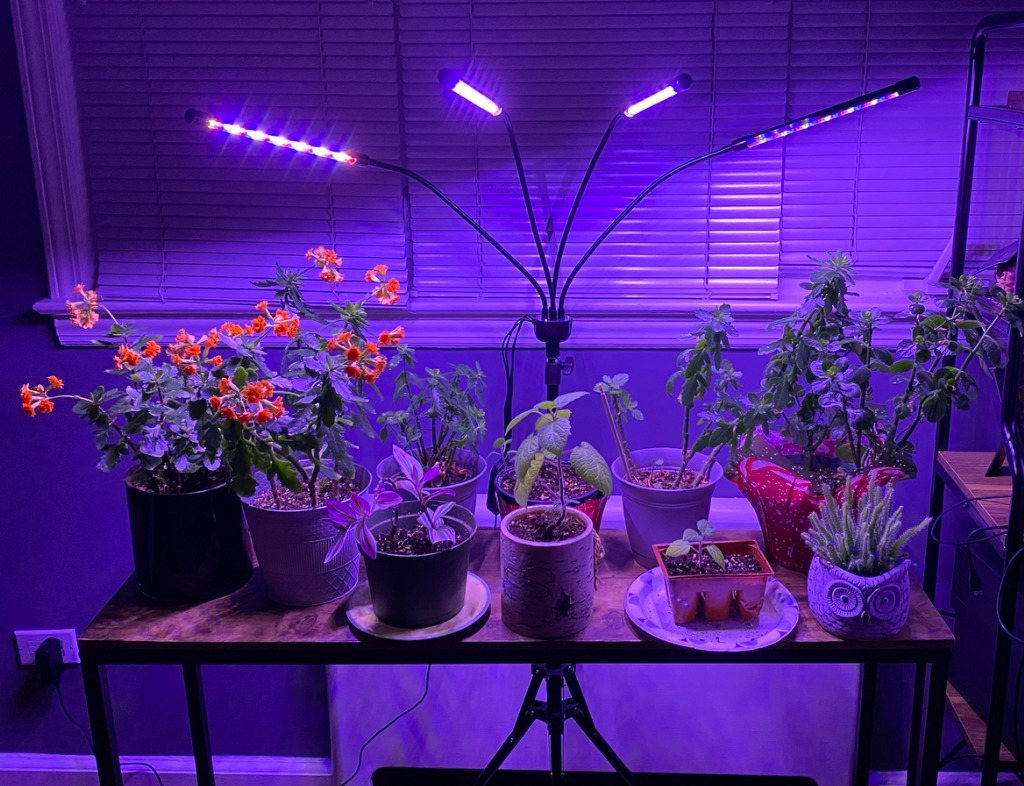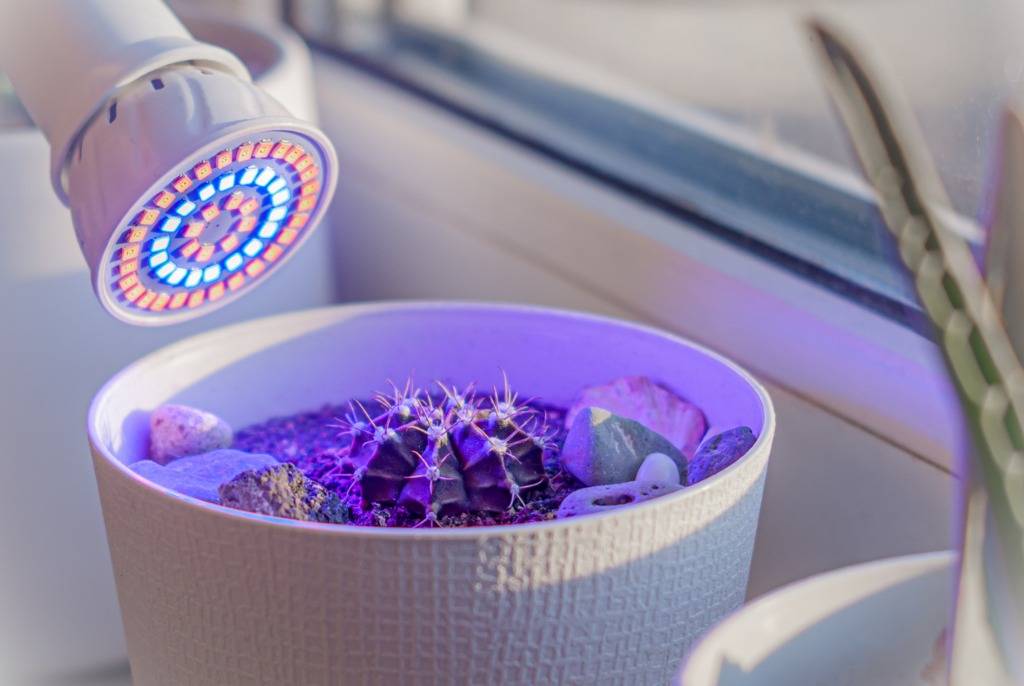
When I was younger, my mom and I stopped at a garden center and came across a lemon tree. I knew very little about growing citrus, but I was intrigued by the idea of growing citrus fruit in Wisconsin, so we bought it. As winter approached, it was time to bring the lemon tree indoors for its first winter, which meant finding the right grow light to keep the tree healthy.
A quick online search reveals many types of grow lights, but how do we find the right kind of lights for our plants? Let’s find out what makes a grow light valuable for our plants.

Do I need a grow light?
For many houseplants, a south-facing window will supply enough light, but if you don’t have any bright windows, a grow light may be a good fit for you. Certain houseplants prefer low light levels and don’t require bright light. A few examples are pothos, philodendrons, and spider plants.
Other plants, like succulents, herbs, veggies, palms, and citrus, require bright light to remain healthy, making grow lights a valuable tool for those plants.
There are two grow lights that are commonly used in homes, including fluorescents and LED. These lights last longer than older types of grow lights and are more efficient than incandescent ones. Fluorescent lights often come in tubes to produce light over a larger area.
LEDs are newer and the most efficient type of lighting. Like fluorescent, they come in various sizes to fit your needs.

Light Quality
In the last few decades, grow lights have rapidly developed in commercial greenhouses, allowing us to research and create lights that provide suitable light for plants. These innovations are helping us with efficient lights that will last years in our homes.
So, what makes a grow light effective? It comes down to a few factors, including light quality. Light quality refers to the wavelength or color spectrum of light.
Outdoor plants are exposed to many spectrums of light from the sun. These spectrums are made of several colors, including blue, green, red, and white. Each color is used by the plant to perform a function, like growing leaves or flowering. Here’s a breakdown of each color and how the plants use it.
Blue light – This color helps with growing stems and leaves on plants. Grow lights often contain blue light to promote healthy leaf growth and keep the plants compact. If you’re growing seedlings or leafy greens, blue light is very beneficial. Blue light has a dim appearance to our eyes. Still, research shows it’s just as helpful as red and green light.
Red light – Red plays a crucial role in promoting flower buds and fruit in plants, which is ideal if you’re growing succulents, citrus, and other flowering plants.
Green Light – This color is less efficient but still used for photosynthesis.
White Light – A spectrum that is more neutral and helps plants with any growth stage.
Grow lights are designed to provide the right balance for each color and promote both leaf and flower growth, giving you the flexibility to grow a variety of plants.

Light Intensity
The intensity of a grow light depends on a few things, including PPF (photosynthetic photon flux), which measures how much light can be used by the plant. You’ll sometimes see PPF listed on the packaging for grow lights, along with Watts. Watts measures how much energy is produced to create light. In general, efficient lights will produce more light with less wattage.
Another thing to consider is the distance from the light to your plants. If you’re growing veggie seedlings, the lights should be 4-6 inches above the plants. However, this distance can vary if the light is more intense. When growing seedlings, it’s good to check them for any signs of burning or crispy leaves. These are good indicators your light is too close. If the seedlings appear leggy and thin, the light is too far away.
Herbs and lettuce are popular indoor plants, and the lights should be kept about 6-12 inches above those plants. Herbs require lots of bright light, so give them as much as possible.
Foliage houseplants have varying light needs and will often thrive in a bright window with indirect sunlight. In contrast, others prefer more direct light, which can be found in a southern-facing window or a grow light. For these plants, grow lights should be kept 12-24 inches above the plants.
Flowering houseplants will often benefit from grow lights, as the extra lighting encourages flower production and compact plants. Some great examples are African violet, citrus, and succulents. While grow lights are helpful to keep these plants healthy, it’s ideal to place them outdoors in summer, as sunlight is far brighter than grow lights.

Using Grow Lights
How long should we leave the lights on during the day? The answer will vary based on the plants you’re growing, but here are a few recommendations.
Seedlings grow best with 16-18 hours daily, while lettuce plants and herbs can be 12-14 hours daily.
You can give foliage houseplants 12-14 hours, while flowering houseplants should receive 14-16 hours of light.
If your plants receive any natural light from a window, these hours can be slightly reduced if the plants are healthy. A timer is the perfect way to give your plants consistent amounts of light each day.

As you start using grow lights, you may wonder if your plants are receiving the right amount of light, and this question can be answered in a few ways.
Are your plants stretching for more light? Plants will reach for more light if needed, and you’ll notice the plant stems becoming thin and leggy. You may also see larger new leaves that are floppy and hard for the plant to support. These are signs you should increase the lighting for your plants.
On the flip side, your plants may be receiving too much light if the leaves are turning brown or look burnt.
Grow lights are an easy solution for indoor plants that like it bright, and you’ll have the added benefit of healthy plants all winter long.
Other Recommended Reading

- Fall Container Garden & Planter Ideas
- Winter Sowing Garden Guide
- Fall Gardening: Using Fall Leaves In The Garden
- Extend The Growing Season: Using Row Covers & Other Techniques
- Pruning Shrubs In Winter

At Jung Seed Co, we strive to be your go-to guide for all your gardening needs. Our YouTube channel The Garden Doctor by Dick Zondag is where he provides gardening tips for all levels of gardeners. When you need reliable gardening advice, turn to the trusted experts at Jung.
View our new catalog online or browse our website for your gardening favorites. To receive info on new products, exclusive deals, and specials, be sure to sign up for our weekly email. Join our Facebook page, to discuss all things gardening!
About the Author: Matthew Olson is a professional horticulturist and garden writer. He has a bachelor’s degree in horticulture from UW-River Falls and is a certified professional with the Minnesota Nursery and Landscape Association. His enthusiasm for plants and the outdoors brought him to the green industry. He regularly writes articles about gardening for both gardeners and industry professionals. He can be reached at matt@mattolsonhorticulture.com.